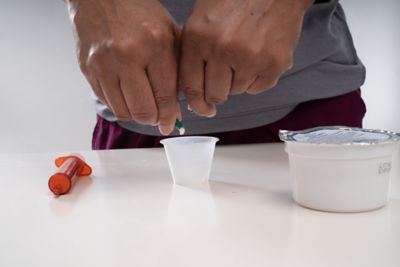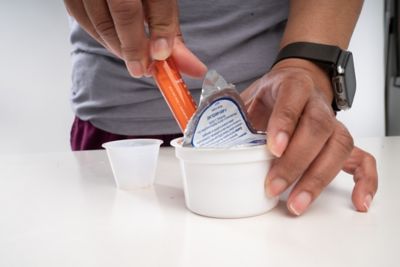Menu
Close
Back
Welcome to
Together is a new resource for anyone affected by pediatric cancer - patients and their parents, family members, and friends.
Learn MoreSome patients will get medicines through a feeding tube. Before giving any medicines through a feeding tube, make sure you know the type of tube your child has. Follow the directions of your doctor, pharmacist, or nurse for how to give the medicine.
Find more information about types of feeding tubes.


Dissolve medicine from a tablet or capsule in water as instructed by your care team. Give each medicine by itself.
If medicine will not go down by gravity, make sure your child is calm. If your child is crying, medicines might not go in. If your child is calm and the medicine will not go in, use the plunger of the syringe to gently push the medicine. If it will not go in with gentle pressure, call your health care provider.
–
Reviewed: June 2022